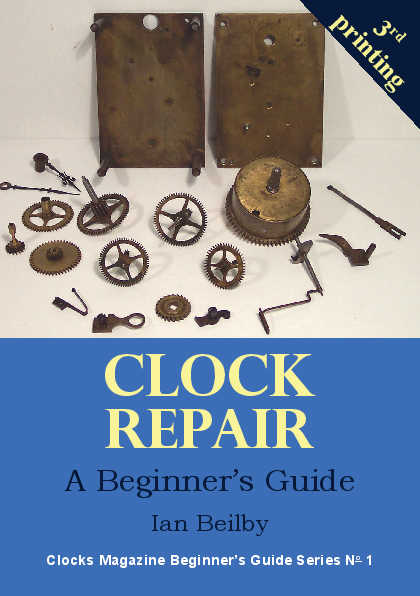| Clocks Magazine Finding faults in clocks |





|
Clock fault finder 1 Inspecting the movementWhen there is no apparent reason for a clock stopping or failing to run, the beginner is sometimes at a loss to know where to look to find the fault and effect a cure. There are many reasons for a clock stopping, some of which are simple to spot, others not. If a systematic check is made, this can help to pinpoint the fault and in some cases save a lot of unnecessary work. It always pays to keep an open mind regarding the cause of possible faults. If the clock does not belong to you, asking the owner some relevant questions can sometimes help. You may also find that the obvious faults are not always the only reason for the clock stopping, though fortunately this is not always the case. One clock owner had a rather nice longcase clock which had just been overhauled. The clock had been moved whilst the decorators were wallpapering the hallway. After replacing the clock in exactly the same place, the clock refused to go. A simple examination revealed the problem. Whilst removing the movement from the case someone must have unknowingly caught and slightly bent the hour hand backwards. The hour hand was now catching on the tip of the seconds hand and stopping the clock. A very simple fault, easy to spot and rectify. However the owner had not spotted the hands catching, and was completely perplexed. He thought the fault must be more serious and lie elsewhere. If only all faults were as simple. One of the most common simple faults is that of a pendulum clock being out of beat. A lot of owners of pendulum clocks do not realise that their clocks are not really portable and the pendulums should always be removed prior to moving the clock. The pendulum bobs on some mantel clocks are relatively heavy, and moving the clock from one place to another can easily result in putting the clock out of beat and the clock failing to run after being moved. Gravity dictates that the pendulum will always hang vertically. If the case is subjected to a sudden movement this can disturb the relationship between the pendulum crutch and the pallets, especially if the crutch and pallet arbor is a friction fit. With the dial and hands removed check the depthing of the motionwork very carefully. The meshing should be on the loose side and must not bind in any way. If a bow spring is fitted to tension the hands, the tension of the spring should retain the hands in place but also allow the hands to be adjusted quite easily. If these checks do not reveal the problem the movement train and escapement will have to be inspected. Actual physical damage is usually easy to spot once the movement is removed from its case, but initially with the movement partly obscured it can be difficult to analyse the faults. Continue with fault finding >> |
|
|